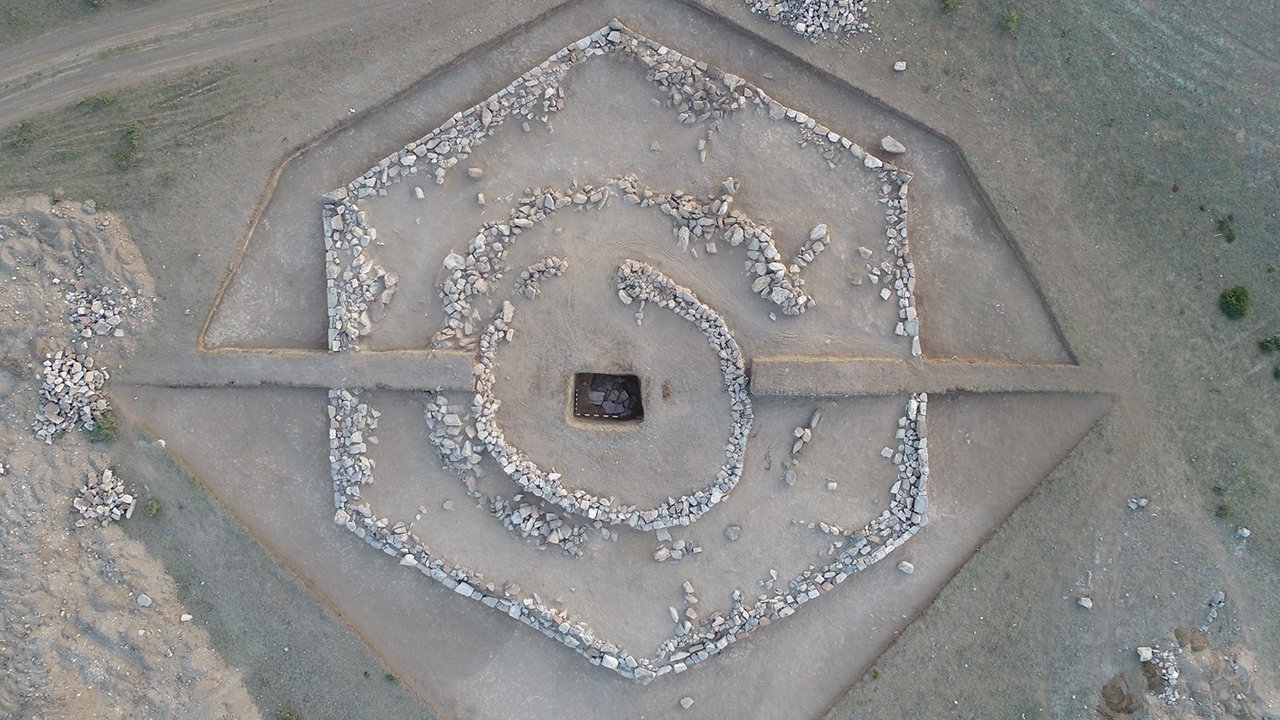© Turkuvaz Haberleşme ve Yayıncılık 2024
In a groundbreaking discovery, Kazakh archaeologists have unearthed a kurgan, a hexagonal-shaped burial mound constructed 3,800 years ago in East Kazakhstan.
The entrance columns of the mound revealed 20 rock paintings depicting camels and horses.
The vast steppes of Kazakhstan hold a deep historical significance, with numerous mounds and stones bearing symbols and markings. From 2020 to 2023, the Gumilyov Eurasian National University (GENU) Department of Archeology and Ethnology conducted excavations near the Kırküngir Monument at the Tokhtamysh Batyr village in Abay district, East Kazakhstan.
The region witnessed the examination of over 100 monuments ranging from the Early Bronze Age to the Göktürk period.
Ulan Umitkaliyev, the department head, emphasized the monument's significance in the history of all Turkic peoples, saying: "The Kırküngir Monument holds crucial importance in the history of all Turkic peoples. By establishing the horse culture, we can trace the spread of Turkic tribes across the world."
"The hexagonal structure observed in the Kırküngir burial mound showcases the advanced expertise in processing monumental stones by the Andronovo communities during the Bronze Age," Umitkaliyev added.
The elite tomb has a diameter of 43 meters and a height of 2.3 meters, containing three preserved sections beneath its structure. The outer walls of the structure, constructed in a hexagonal pattern, consist of large megalithic stones.
Additional inner sections leading to the tomb chamber are built in an oval shape.
The second passage has a diameter of 12 meters, while the third section measures 6 meters.

Human and horse bones discovered during the 2021 excavation were studied by a team led by Yu Itashahi from Tsukuba University in Japan.
Radiocarbon data revealed that the Kırküngir Monument was constructed around 1859 B.C., over 3,800 years ago.
Twenty panels on the outer part of the structure displayed various animal images in petroglyphs. The entrance columns of the pyramid-shaped structure exhibited a composition of 20 painted images, including two camels, two humans, an internal predator, four symbolic signs and 23 horse images.
"Based on these images, the Kırküngir monument reached a significant point in the socio-economic activities and spiritual beliefs of the Andronovo cultures in Kazakhstan," Umitkaliyev noted.
The horse culture at Kırküngir was not limited to painted images but was also evidenced by horse bones found within the tomb area, suggesting that equestrian culture was established during the Early Andronovo Period, contrary to previous beliefs.
"The horse increased human walking speed by sixteen times. Thanks to horses, our Turkic ancestors spread across the world, forming great steppe cultures," Umitkaliyev remarked.
For the first time among Bronze Age monuments, camel imagery was discovered on the external walls, signifying its novelty among the monuments of that era.
Describing the Kırküngir hexagonal burial mound as one of the earliest sacred burial sites of Turkish culture, Umitkaliyev said: "Considering this complex's presence alongside monuments ranging from the Bronze Age to the Turkic era, we can state that it is one of the earliest sacred burial sites of Turkish culture. This is due to the continuous development of the special horse culture unique to Turks and the transformation of the horse into a totemic symbol within the burial site."
